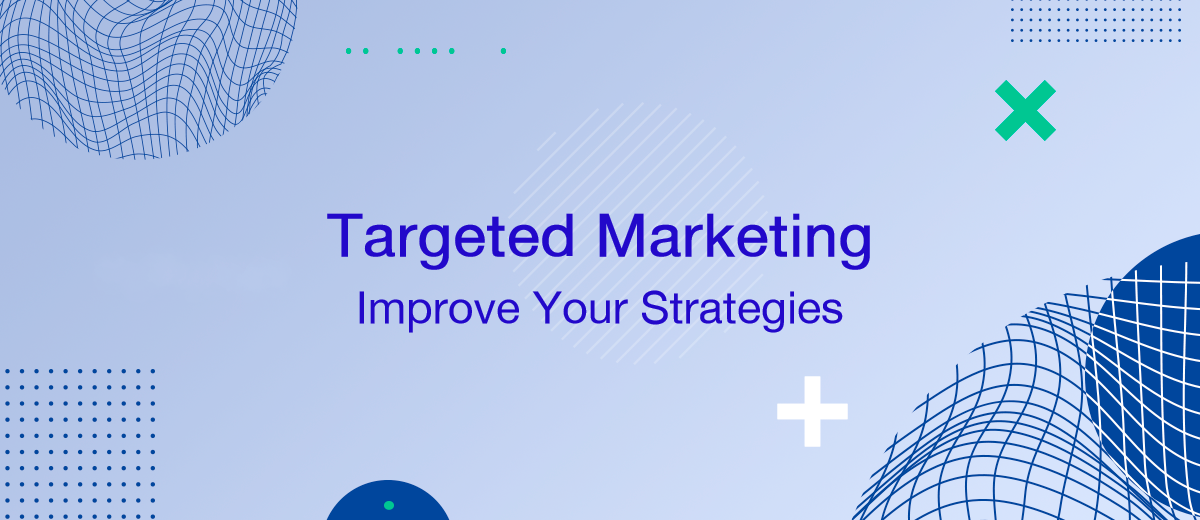All of your customers have unique needs, desires, motivations, and challenges that drive them to make purchases. Of course, we can’t possibly know every individual’s innermost buying motivations. But what we can do is use targeted marketing to tailor marketing messages to specific groups of customers. The result? Marketing campaigns that engage and convert more customers. In this guide, we’ll walk you through how to create a targeted marketing strategy that can help you meet your business goals.
What is Targeted Marketing?
Targeted marketing uses customer data—demographics, preferences, interests, etc.—to group audiences based on their commonalities. These groups can then be targeted with tailored messages that appeal to their specific needs, desires, and preferences.
Why is targeting customers important? First and foremost, because it’s what customers want. 73% of customers expect businesses to understand their unique needs and expectations.
Fail to target customers with relevant, personalized marketing messages, and you risk losing them to your competitors. But with a targeted marketing strategy, you can drive increased engagement, conversions, revenue, and loyalty.
10 Tips for Improving Your Strategies for Targeted Marketing

So, how is target marketing done? Here are ten tips to guide your targeted marketing strategy to success.
1. Clearly Define Who Your Customers Are and Their Needs
For targeted marketing to work, you need a fundamental understanding of who your customers are and what they want.
Take B2B vs. B2C customers as a general example—two customer bases with very different sets of buying motivations. B2B customers seek solutions that address their professional needs and challenges, while B2C customers make purchases based on personal needs and desires. This fundamental difference changes the core of targeted marketing campaigns.
So, conduct market research and competitive analysis to survey your customer base and pinpoint their needs. From there, forge a general—but clearly defined—customer profile defining who your target customers are.
2. Divide Your Audience into Smaller Segments
Now, it’s time to dig even deeper and divide your audience into segments. This is called customer segmentation, and it involves grouping customers based on common characteristics. In doing so, you can appeal to the specific needs, desires, and preferences of your different audience segments.
You can use data collected from various sources—your CRM, social media, website analytics, customer surveys, etc.—to segment customers based on their:
- Demographics: For example, age, gender, income, and education level.
- Geographics: Location (country, state, city), as well as cultural preferences and population type.
- Psychographics: Personality, lifestyle, interests, and values.
- Behaviour: Browsing and purchasing habits.
- Technographics: The devices and software used by customers.
- Firmographics: Company size, location, industry, structure, and purchasing power.
The more distinct your customer segments are, the more personalized your marketing messages can be. Leveraging customer segmentation effectively requires the right partnership. A webflow enterprise can be pivotal in crafting targeted strategies for each audience segment, using refined messaging and optimal channels to ensure your marketing is as effective as possible. With their expertise, your personalized campaigns will not just reach but resonate with, and ultimately convert the right demographics into loyal customers.
3. Develop Marketing Messages that Resonate with Each Segment
Content that appeals to Gen Z audiences may not resonate with Gen X. Incentives that excite customers in one location may be completely irrelevant to customers in another location. You get the picture—a one-size-fits-all approach results in customers being spammed with irrelevant, unengaging marketing messages.
Using what you know about each customer segment, produce marketing messages that resonate with their unique needs. For example, you can create tailored blogs, social media, and video content that appeals to your different audiences. You can use customers’ purchase history, physical location, and individual interests to target them with relevant, high-value offers. The more relevant the content, the more likely customers are to convert.
4. Choose the Marketing Channels that Can Reach Each Segment
To maximize audience engagement, make sure to place your marketing messages where customers will see them. Identify the channel preferences of your target audiences, bearing in mind any differing preferences across segments.


Generally speaking, younger generations tend to favour social media, while older generations prefer traditional channels, such as email. Hubspot found that 64% of Gen Z and 59% of Millennials discovered new products on social media, compared to only 22% of Boomers.
Or, let’s say you’re selling software with different packages for business and personal use. You might target business professionals via LinkedIn and email and consumers via more commercialized social platforms like Instagram.
5. Implement Marketing Automation Tools to Streamline Processes
Marketing automation tools streamline the tedious, repetitive tasks that erode productivity. They vastly reduce manual data entry and automate email marketing, lead scoring, social media posting, upselling, account-based marketing, and much more. Plus, they can be integrated with the rest of your marketing tech stack, including your CRM and communication tools.
Our service offers a whole list of ready-made integrations that can significantly increase the speed and efficiency of marketing efforts. By connecting ready-made automation solutions, marketers can set up automatic transfers of data from Facebook Lead Ads, Google Lead Forms, and other sources to CRM systems, platforms for SMS and email mailings, instant messengers, task managers, etc.
6. Define the Goals of Your Targeted Marketing Campaign

As well as helping you to align activities with objectives, having clear goals keeps your team focused and motivated. Establish exactly what you’re trying to achieve with your targeted marketing campaign and devise specific, measurable, achievable, relevant, and time-bound goals.
For example, you may want to:
- Drive more organic website traffic.
- Increase brand awareness.
- Generate more high-quality leads.
- Improve email conversion rates.
- Boost social media engagement.
- Increase revenue.
- Optimize brand positioning.
7. Continuously Test Your Campaigns and Track Their Performance
Test your marketing campaigns to optimize them for your audiences. A/B testing is a reliable testing method that takes the guesswork out of targeted marketing. It involves splitting customer segments into two groups and presenting them with two different versions of the same digital asset. So, a landing page, email, advertisement, etc. Use A/B testing to evaluate which marketing assets drive the best results. And don’t forget to track the performance of your campaigns in alignment with your goals.
8. Use Analytics Tools to Make Data-Driven Optimizations
Marketing analytics tools facilitate the mass collection and analysis of invaluable marketing data. Obtain access to web analytics, customer data, and competitive intelligence, as well as critical marketing metrics. Marketing qualified leads, customer acquisition cost, engagement rates, customer lifetime value—all of these metrics and more can be leveraged to gain deeper insight into your campaign performance. Use these insights to implement informed, data-driven decisions.
If your business operates globally and you’re craving even richer insights, an integrated ERP unites all of your business applications, from inventory to accounting and HR. You can even integrate your existing CRM system with the ERP to improve business data processing. This means that you can quickly access data from different departments, such as your UK and your US branches, for example, and use it to further optimize your targeted marketing strategy.
Use accounting data to optimize ad spend. Tailor marketing messages thanks to the most up-to-date inventory information. And enhance the productivity of your marketing team using real-time performance data.
9. Assess Campaign Results to Improve Future Targeting
Start by revisiting the campaign objectives that you defined earlier. Use your analytics to align these goals with campaign results, considering pre-campaign benchmarks as you do so. Were you able to meet your goals? If so, what were the strategies that empowered you? If not, what hindered your success? The results of this evaluation will help you identify strengths, pinpoint weaknesses, and observe what you can do better next time.
10. Stay Updated and Comply with Data Privacy Rules in Marketing
Data, data, data—it’s what makes targeted marketing possible. But, while data may be a marketer’s greatest asset, complying with data privacy rules can be an Achilles heel. Data breaches cost businesses an average of $4.35 million and can lead to significant reputational damage on top of that. So, stay updated with GDPR, CCPA, and any other privacy laws that exist in your country or state.
Are you Ready to Improve Your Marketing Strategy?
Targeted marketing strategies help you build an authentic relationship with your audience. Instead of bombarding them with generalized, superficial messages, you can create marketing content that drives conversions, engagement, revenue, and loyalty.
So, conduct in-depth customer research, segment your audience, and target each group with tailored marketing messages. Don’t forget to track campaign performances and leverage analytics to continuously improve your campaigns and meet evolving business goals.
Don't waste another minute manually transferring leads from Facebook to other systems. SaveMyLeads is a simple and effective tool that will allow you to automate this process so that you don't have to spend time on the routine. Try SaveMyLeads features, make sure that this tool will relieve your employees and after 5 minutes of settings your business will start working faster.
